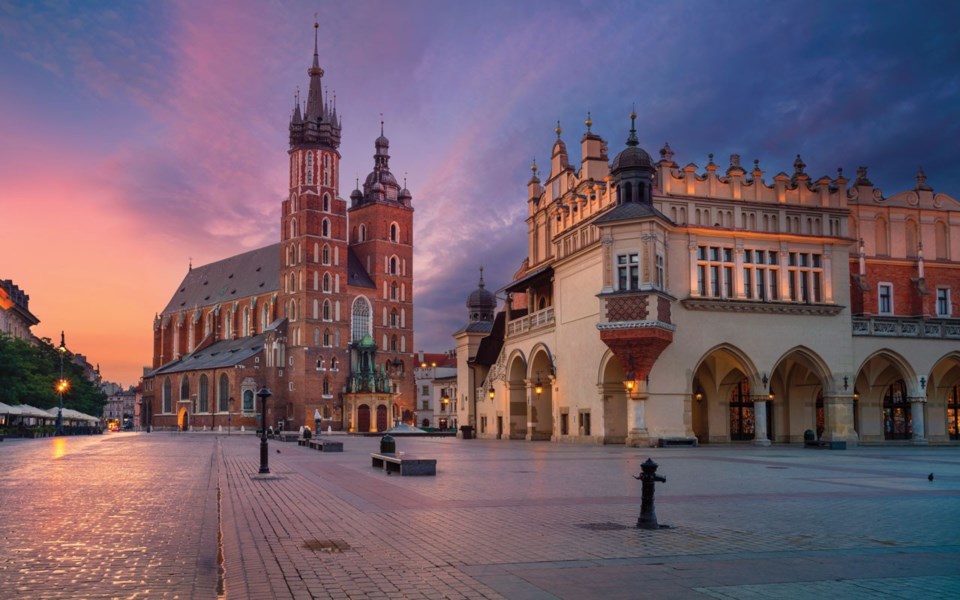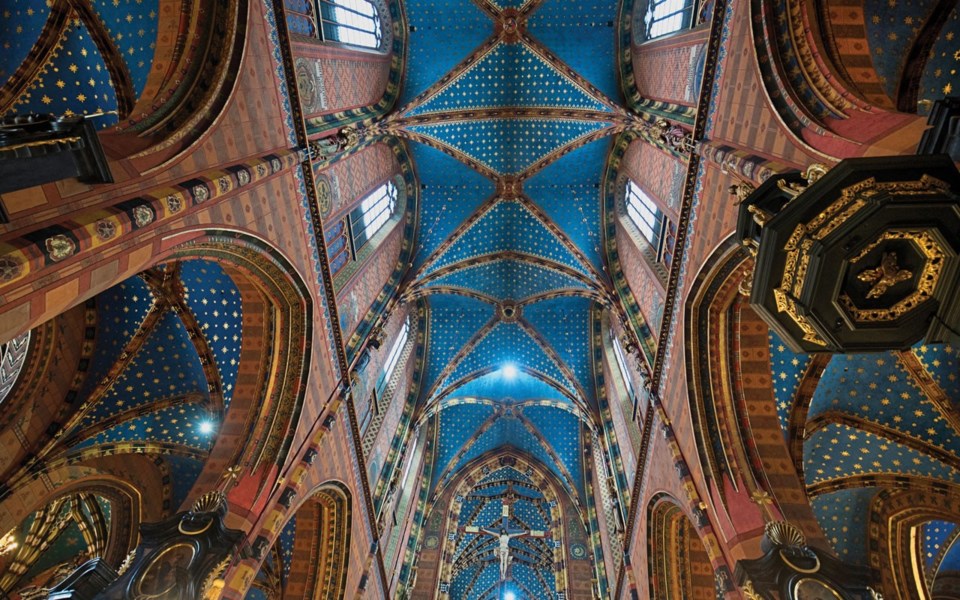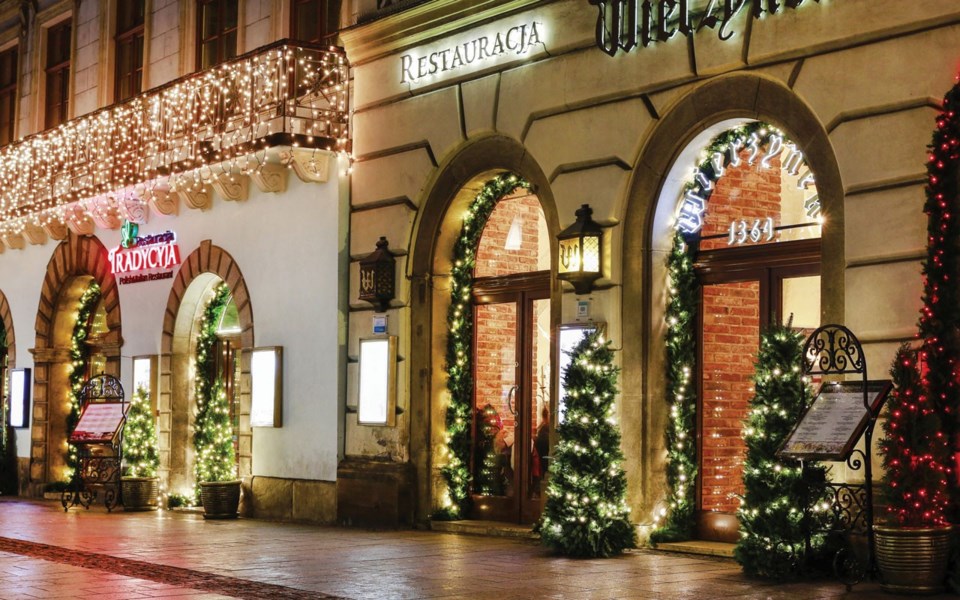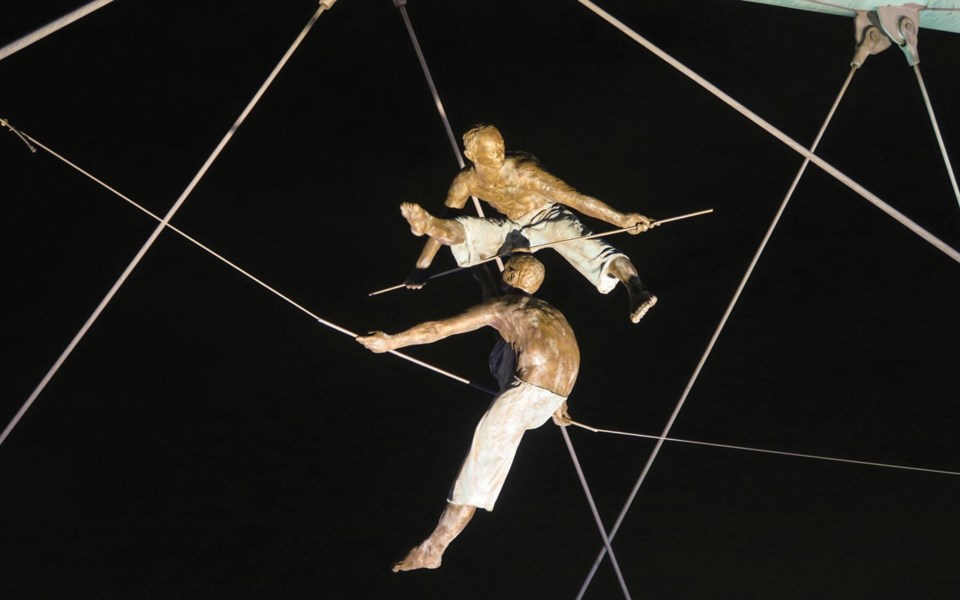
A classic old tram trundles past as we head down a treeless street towards the centre of Old Town. The buildings we pass are covered with graffiti and many shops seem vacant. Kraków is not as exciting or picturesque as my wife and I had expected.
That changes in an instant when we reach the Main Square (Rynek Gówny). We stand transfixed as we stare out at Europe's largest medieval market square lined with pastel-coloured townhouses and clusters of cafes and restaurants that spread onto the cobblestones. This is postcard-picture perfect and a world away from Whistler.
Kraków is a wonderful introduction to Poland as it is one of the few major European cities to escape major damage during the Second World War. It was the capital of Poland until 1596, when Warsaw took over, and now it is the second-largest (and most touristy) city in the country.

MAIN SQUARE
Main Square is the social hub of Kraków, and the logical place to start exploring this Renaissance-style Cloth Hall, its archways leading to stalls selling jewelry and all types of souvenirs.
In one corner of the square stands red-brick St. Mary Church with two towers of unequal height and form. It is not conventionally attractive, but go inside and you find a sky-blue ceiling scattered with gold stars, 14th-century stained-glass windows, patterned marble flooring and an extraordinary altar piece.
Main Square is also a good place to sit and watch the world go by. There are buskers, horse-drawn carriages, flower-sellers, mime-artists, and happy crowds to grab your attention. We listened to the trumpet played from the top of St. Mary's on the hour as we sipped our coffee. Later, we visited the Rynek Underground Museum, an interactive panoramic archaeological museum at the medieval level of the city beneath the square.
THE CASTLE
he other major attraction is the impressive Wawel, the castle that dominates the city centre. The ancient seat of power in Poland since 1,000 AD, the Wawel is a rambling complex of historic buildings. People have been living here for about 5,000 years, and have built on the hill successively so there is no grand plan. As we explore this jumble of palace, chapels, cathedral, colonnaded courtyards, armouries, and crypts all sitting behind fortified walls, its very lack of classical harmony becomes one of its endearing features to me.
You can see Poland's Crown Jewels in the treasury; the royal tombs and Russian murals in the cathedral; and the highly decorative apartments and state art collections in the castle.

I strongly recommend the recently re-opened Czartoryski Museum, which is famous, of course, for its Leonardo da Vinci painting Lady with an Ermine, but there is much more besides this including two works by Rembrandt.
OTHER ATTRACTIONS
Nearby Kazimierz brings home the terrors of the Second World War, when Poland was under German occupation. A Jewish community that had existed here for nearly 500 years was wiped out and reminders of that time are found in major attractions such as the Old Synagogue and the Galicia Jewish Museum. Today, Kazimierz is making a comeback, as it houses some of the wackiest and most-stylish independent stores, art galleries, bars and clubs in Kraków.
We walk across the pedestrian bridge that spans the Wisa River, linking Kazimierz with Podgórze, and linger to admire the 10 sculptures of acrobats suspended from its arch. Podgórze was Kraków's ghetto during the Second World War, where 20,000 Jews were rounded up by the Nazis and forced into an area of 320 houses by a three-metre high wall.
We see the stunning St. Joseph's Church then work our way across to Ghetto Heroes' Square to see the 70 bronze chairs, representing the furniture left in the street after the residents were rounded up in 1943 for the "final liquidation" of the ghetto.
Most will know the name Oskar Schindler, the factory owner whose story gained worldwide recognition with the movie Schindler's List. The factory is now a museum with a profoundly moving permanent exhibition that covers not only Schindler's role in saving 1,000 Jews from the ghetto, but the wider story of life in Kraków under Nazi occupation from 1939 to 1945.

EATING, DRINKING AND PARTYING
Polish cuisine is not the world's greatest but we enjoyed the 650-year-old Wierzynek Restaurant. It has elegant surroundings, decorative timbered ceilings and an excellent menu offering dishes such as venison tartar and wild boar goulash. Afterwards, we eat an ice-cream treat from Lody na Starowilnej, which has been serving a short menu of flavours for many years.
Nightlife in Krakow ranges from an uplifting evening listening to one of Fryderyk Chopin's tinkling piano concertos in the 16th-century elegant Bonerowski Palace to braving Tytano, an old tobacco factory where there are bars, restaurants and clubs. The high ceilings, large loft windows and exposed brickwork have all been retained so there is plenty of atmosphere here.
There is a small community of Canadians living in Krakow and contact can be made through www.internations.org/krakow-expats/canadians.
The Krakow Tourist Card allows you to travel freely on buses and trams across the city, as well as granting free access to more than 30 of the city's museums. The price for a three-day card is C$42.



